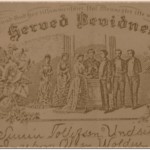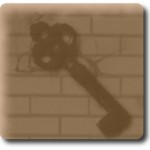Genealogy Searches by Place
The Basics of Norwegian Genealogy
April 9, 2012 by ramona
Filed under Articles, Genealogy Searches by Place, Introduction to Genealogy, Latest News
 When tracing your Norwegian ancestors, you will learn that climbing your Norwegian Family Tree is a unique experience in genealogy research. From naming practices to language barriers and cultural differences, Norwegian genealogy is distinct in its resources and research techniques. In this article, Genealogy Beginner will pave your path with the basics of Norwegian genealogy research so you can start adding the names of your “Viking” forbearers to your family template.
When tracing your Norwegian ancestors, you will learn that climbing your Norwegian Family Tree is a unique experience in genealogy research. From naming practices to language barriers and cultural differences, Norwegian genealogy is distinct in its resources and research techniques. In this article, Genealogy Beginner will pave your path with the basics of Norwegian genealogy research so you can start adding the names of your “Viking” forbearers to your family template.
Ancestors From Norway: Getting Started
One of the first things you will need to understand about researching your ancestors from Norway is that the rules of following a single surname from generation to generation do not apply. Norwegian immigrants often took the name of the farm where they lived. This in itself can be a hint in your research. For example, in the case of two brothers, Johann Tollevson and Simon Tollevson who immigrated in the 1600’s one brother took the name Rugsveen and the other adopted the surname Undseth for the farms they were living on when they immigrated.
However once your research leaves the shores of North America your one name study ends. Prior to the 1900’s your Norwegian ancestors used a patronymic naming system where the child was given the first name of their father as a surname. In these cases, you will find, as in the case of the two brothers named above – Johann and Simon – that their fathers name was Tollev.
To get started digging for your Norwegian roots you will need your ancestors “Norwegian” name and date of birth along with the farm name where your ancestor lived. Although this may seem a little odd at first you will soon find that these peculiarities of Norwegian genealogy may be very helpful when searching out your ancestors from Norway.
Hints:
Norwegians were wonderful keepers of records and family bibles are very common
Norwegian dates are always written as…Day/Month/Year
Tools for Norwegian Genealogy
Once you have sorted out the names and dates of birth it is time to start gathering your research tools. Here is a short list to get you going.
– Family Tree Template
– Norwegian English Dictionary
– Word list for special terminology
Norway’s Genealogy Resources
Norway Church Registers
There are church registers for every parish in Norway with the oldest dating back to the mid 1600’s for some parishes. Records were recorded as both religious and and civil events for example a birth would be a civil event while a baptism is a religious event. Among the records of births, marriages and deaths you will often find entries of announcements made to the parish.
Norway Census
The earliest census in Norway took place in the 1600’s, these early census were called “Prestenes manntall” and recorded information for men, boys and sometimes widows. Sadly, Norway’s census records are incomplete and contain several errors, often with large parts of families missing. Beginning genealogists should know that Norwegian census is not considered a reliable source of information.
Bygdebok
Possibly the best resource for tracing your Norwegian ancestors is the Bydebok, a book of land records that contains a great deal of historic information. It often records a history of the families who owned the land… often into the 1300’s. Bygdebok are divided by communities listing the farms within one or two parishes and are a must have for anyone studying their Norwegian family history.
Other records available to genealogists are Probate, Mortgage and Tax Registers although like the census, the records are often incomplete.
The good news for anyone doing research on his or her ancestors from Norway is that there is a lot of information available on the internet. Join us on the Genealogy in General forum for a list of important links to get you started on your Norwegian genealogy.
Genealogy Brick Walls: Look In the Unlikely Places
March 18, 2012 by ramona
Filed under Articles, Genealogy Searches by Place, Introduction to Genealogy, Latest News
 Hitting a brick wall in your family tree is an extremely frustrating experience for every family tree enthusiast from the novice to the advanced. Especially after, you have spent hours combing through all of the obvious records. When you have already checked the church records, civil records, obituaries, newspaper archives, immigration records and census…do not give up. Just realize that it is time to pull out your shovel and start digging deeper.
Hitting a brick wall in your family tree is an extremely frustrating experience for every family tree enthusiast from the novice to the advanced. Especially after, you have spent hours combing through all of the obvious records. When you have already checked the church records, civil records, obituaries, newspaper archives, immigration records and census…do not give up. Just realize that it is time to pull out your shovel and start digging deeper.
In short, after you have looked in all of the likely places the only places left to check are the unlikely ones.
Genealogy in the Unlikely Places
The unlikely places are usually the ones you ruled out your first time through. You may be very surprised at how much information you can find by looking in records that seemed irrelevant or illogical to your family tree research.
Finding Ancestors in Land Records
You have ruled this out because your ancestor did not own land, but did you know you could still find the record of a lease for a tenant farmer or rental agreement for your Great, Great Grandma’s city home.
Your Family Tree and Depositions
You have probably already checked the immigration records to see if your ancestors changed their name upon landing in the new country. However, did you know that many immigrants did not change their names until they were already naturalized citizens? If your ancestor decided to change their name after becoming a naturalized citizen, you would find this information in court records as depositions.
Name changes of this type often happened because immigrants felt a foreign name made their lives more difficult in their new home. If your ancestor has pulled a disappearing act, searching depositions for name changes would be a good place to start.
Historical Societies and Genealogy
Your local historical society (or the local historical society where your ancestor lived) may hold the clues you have been looking for. Historical societies are notorious for holding little known documents and unpublished works that are only listed within their collection.
One Family Tree Search is Never Enough
Newspaper archives may be something you have already checked. Nevertheless, you should try them again. Many genealogy beginners give up far too soon on this information source by stopping at a single search type. Any search of a newspaper archive should be undertaken with three search strategies.
- Search by Name
- Search by Date
- Search by Location
A newspaper can hold so much information in a single issue that not all names are indexed. That is why a three-tier search is necessary.
Although sometimes a brick wall in your genealogy research is due to records being lost in fires and wars, poor preservation and/or the records were simply not kept. The biggest problem with brick walls is that family enthusiasts either give up too soon or just don’t know where to look next. Should you have any questions or want a little extra help tackling your brick wall, please feel welcome to post your questions to the Ask a Genealogist forum. Genealogy Beginner looks forward to hearing from you.
Image Credit: Ramona Hartley
Maps of Historic London
March 8, 2008 by Chris
Filed under Genealogy Searches by Place, Introduction to Genealogy, Public Records
 The folks over at Genealogy Insider have brought us a great post on London Maps. In an article by Grace we learn about the virtual exhibition of historical maps of the city from the British Library. This is a must visit, titles like this one from a map dating from 1653 should spark your interest for more.
The folks over at Genealogy Insider have brought us a great post on London Maps. In an article by Grace we learn about the virtual exhibition of historical maps of the city from the British Library. This is a must visit, titles like this one from a map dating from 1653 should spark your interest for more.
‘A guide for Cuntrey men In the famous Cittey of LONDON by the helpe of wich plot they shall be able to know how farr it is to any Street.’
In this exhibit you will find 40 historic plats organized via Google maps that can easily help you clarify the areas they correspond to. If you prefer, you also have the option of looking at maps by time period.
You can access the full post by clicking here. It is really amazing how things are changing with the internet. There is no end to the resources available to us all in our search for our ancestors.
…
Not interested in the map?
Blank Family Tree with Step-by-Step Instructions
…
